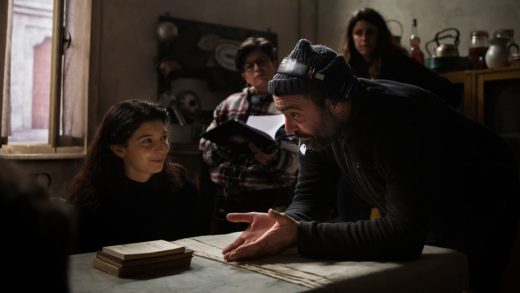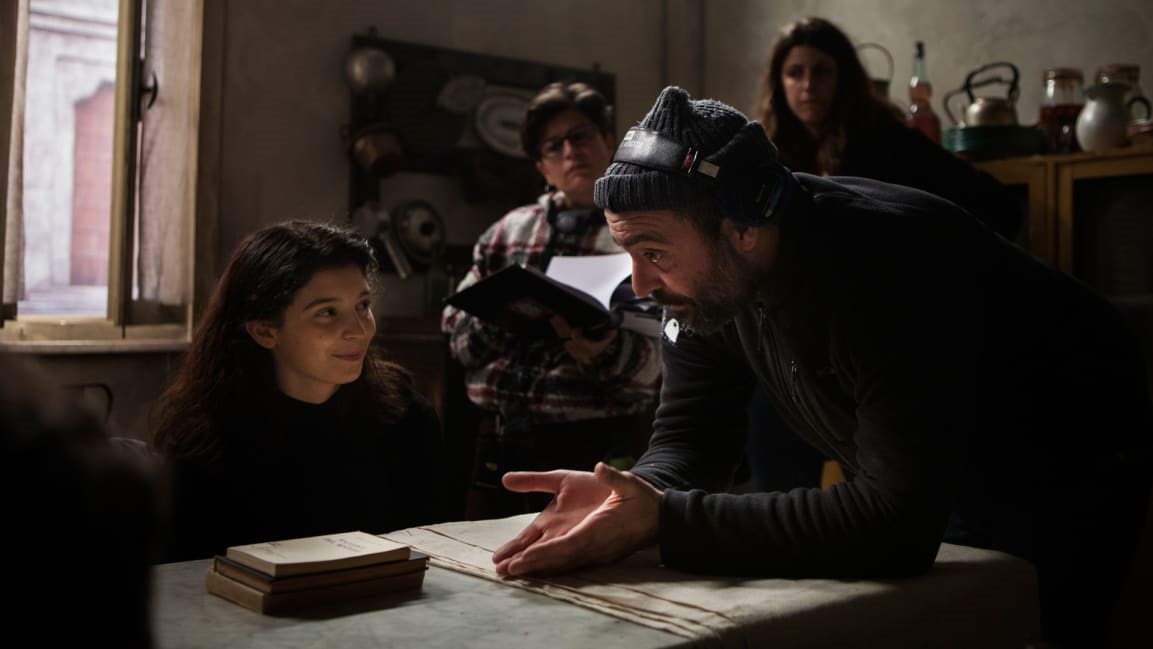My Brilliant Friend director talks about bringing Elena Ferrante’s beloved novel to life for HBO
In 2007, Italian director Saverio Costanzo wrote to the publisher of Elena Ferrante’s novella The Lost Daughter and asked if he could option the film rights. The story had captured the filmmaker’s attention because of the way it mined a simple plot—a middle-aged professor vacationing at the beach takes a young girl’s doll—for maximum emotional and psychological effect. The publisher and Ferrante (who writes under a pseudonym and is famously reclusive) granted Costanzo his wish with one condition: He had six months to come up with an adaptation that pleased all parties. Costanzo accepted the challenge. But after six months of trying, and failing, to bring the story to life for the big screen, he abandoned the project.
“I was not able to find a common theme to transpose the novel into a film,” he told Fast Company via email.
But Costanzo made an impression on Ferrante, and nearly a decade later, the author herself suggested that Costanzo direct the adaptation of My Brilliant Friend, the first novel in her four-part Neapolitan series that has sold more than 10 million copies in 40 countries. Costanzo said yes. “I am certainly more mature and more aware than I was back then,” he said.
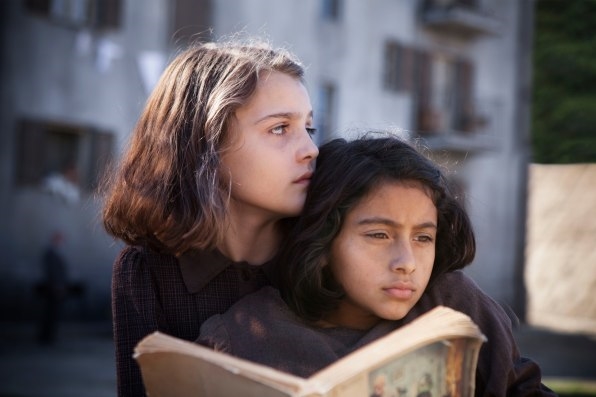
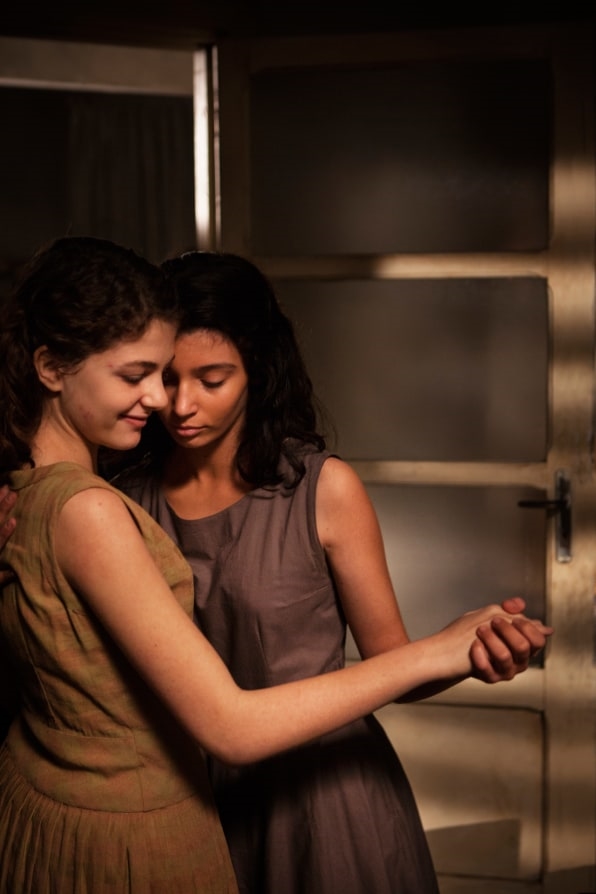
[Photo: courtesy of Eduardo Castaldo/HBO]
But no amount of maturity and awareness can prepare one to tackle a project as singular as My Brilliant Friend, a co-production between HBO and the Italian networks RAI and TIMVision. Set in a rough, working-class neighborhood in post-World War II Naples, Ferrante’s Neapolitan books chronicle the complicated friendship of two girls—the narrator Elena (nicknamed Lenù) and Lila—their lives intertwining and unraveling many times over the course of some 50 years. The first episode of My Brilliant Friend debuted on HBO last Sunday.
For the series to work, it had to capture the details of the bustling, often violent world Ferrante created, starting with the Neapolitan dialect spoken by the characters. To find their elementary school-age Lenú and Lila, the producers auditioned nearly 9,000 kids all over Italy’s Campania region before finally stumbling on two girls with no acting experience: Elisa Del Genio and Ludovica Nasti. Once hired, the girls took acting classes to master not just memorizing lines but also conveying the deep interiority of Ferrante’s books, a large portion of which take entirely place in Elena’s head.
Translating the inner workings of literary characters to the screen is never easy—and it becomes even trickier when the author is as elusive as Ferrante. Little is known about the pseudonymous author, but much is conjectured: That she is a translator living in Rome in a nine-bedroom apartment; that she is the daughter of a Holocaust survivor; that her books draw on her own life. During the production of My Brilliant Friend, Ferrante made herself available to Costanzo, weighing in on all eight of his scripts, critiquing dialogue, and arguing for scenes to not be cut—always via email, never in person. The director has likened the experience to working with a “ghost,” albeit a rather opinionated one. (Costanzo also worked with a team of Italian writers as well as Jennifer Schuur, a U.S. TV writer and die-hard Ferrante fan who was brought onboard to make sure the show was accessible to American audiences.)
A few days after the series premiered, Costanzo answered email questions from Fast Company through a translator, weighing in on Italian neorealist films, how art has no gender, and whether he’ll return to direct the remaining novels in the series.
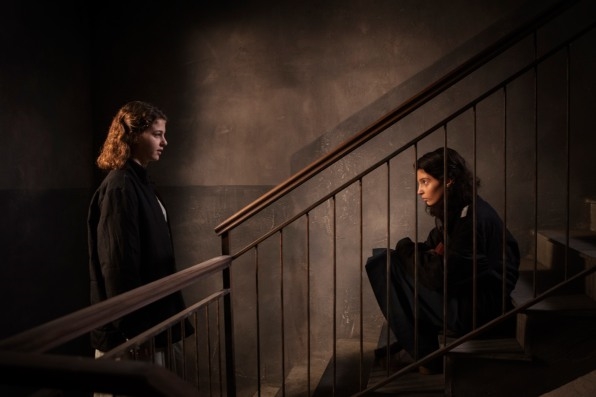
[Photo: courtesy of Eduardo Castaldo/HBO]
Fast Company: How did you prepare for this project?
Saverio Costanzo: We certainly did a lot of research to re-create the rione [the old neighborhood] and make it come to life. We studied every detail of the times we were bringing back to life by carefully watching Italian neorealism films from the 1950’s. It was important for us to keep the literary density of the text. Cinema is a much poorer form of storytelling compared to literature, so our challenge consisted of focusing on staging, acting nuances, and shots, so that every frame would carry the same literary tension as the book. The work proved to be fascinating and full of beauty. Witnessing Ferrante’s pages being brought to life was like seeing a flower blossom.
FC: Elena Ferrante never visited the set while you were filming, and you’ve never met. Yet she weighed in on the project and was very frank in her feedback to you. What creative challenges did you encounter in adapting such a beloved series whose creator is somewhat of a ghost?
SC: Ferrante, in addition to being a talented writer, is also a great screenwriter. She has an amazing theatrical sense of the scene. Her notes, on dialogues or the structure, were always open, never defensive, and were always geared toward the metamorphosis that her own text was undergoing as it was turned into a film. Additionally, I have discovered that working via email is a way of avoiding wasting time with useless words.
FC: What feedback did you most take to heart, and were there changes that Ferrante inspired?
SC: Ferrante always insisted that the density of her novel be respected. I never disagreed with her notes, because she only made a few, extremely pointed ones.
FC: What was it like making a TV series [in Italy and] in the Neapolitan dialect that was always destined to be seen by a U.S. audience? Was there anything that you tweaked so that it would be better understood by Americans?
SC: There was no attempt on our part to make the language more understandable. The novel had proved to be universal by reaching millions of readers around the world. We knew that the events and feelings told in the story were felt and understood.
FC: Did you encounter any challenges as a male director interpreting a very female-centric story written by—we think—a woman with very strong opinions on feminism? Did you tackle this project differently because of this?
SC: I can’t categorize art according to gender. Art has no gender. The soul has no gender. Feminine and masculine coexist equally inside each of us. I put myself in the shoes of Ferrante’s characters, men and women. I feel privileged to be a part of her wonderful and profound feminine universe, and I certainly hope that being a man does not set a limitation to the power of the story. But if my being a man has indeed been a limitation, I hope that my feminine side came to the rescue.
FC: Do you have plans to adapt the rest of the Neapolitan series?
SC: If I don’t get fired, I’d be happy to continue and do the whole tetralogy. I have always considered My Brilliant Friend as one of my films rather than a series, and a director would never leave his film unfinished.
(53)

